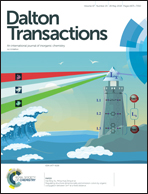Towards deriving Ni-rich cathode and oxide-based anode materials from hydroxides by sharing a facile co-precipitation method†
Abstract
Although intensive studies have been conducted on layered transition metal oxide(TMO)-based cathode materials and metal oxide-based anode materials for Li-ion batteries, their precursors generally follow different or even complex synthesis routes. To share one route for preparing precursors of the cathode and anode materials, herein, we demonstrate a facile co-precipitation method to fabricate Ni-rich hydroxide precursors of Ni0.8Co0.1Mn0.1(OH)2. Ni-rich layered oxide of LiNi0.8Co0.1Mn0.1O2 is obtained by lithiation of the precursor in air. An NiO-based anode material is prepared by calcining the precursor or multi-walled carbon nanotubes (MWCNTs) incorporated precursors. The pre-addition of ammonia solution can simplify the co-precipitation procedures and the use of an air atmosphere can also make the heat treatment facile. LiNi0.8Co0.1Mn0.1O2 as the cathode material delivers a reversible capacity of 194 mA h g−1 at 40 mA g−1 and a notable cycling retention of 88.8% after 100 cycles at 200 mA g−1. This noticeable performance of the cathode arises from a decent particle morphology and high crystallinity of the layered oxides. As the anode material, the MWCNTs-incorporated oxides deliver a much higher reversible capacity of 811.1 mA h g−1 after 200 cycles compared to the pristine oxides without MWCNTs. The improvement on electrochemical performance can be attributed to synergistic effects from MWCNTs incorporation, including reinforced electronic conductivity, rich meso-pores and an alleviated volume effect. This facile and sharing method may offer an integrated and economical approach for commercial production of Ni-rich electrode materials for Li-ion batteries.



 Please wait while we load your content...
Please wait while we load your content...